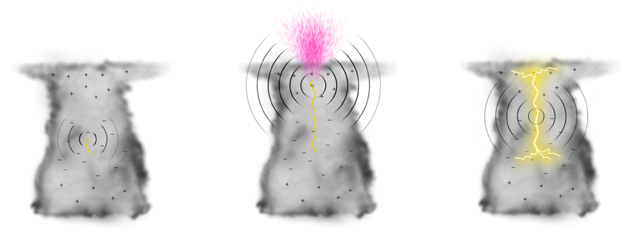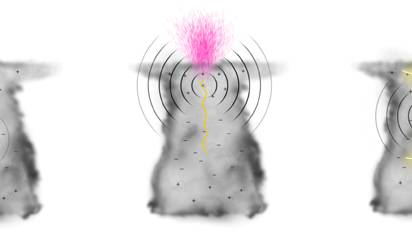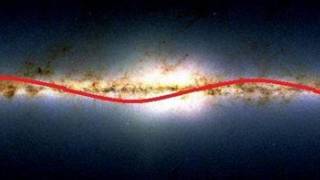Scientists detect dark lightning linked to visible lightning
Source: phys.org
Researchers have identified a burst of high-energy radiation known as ’dark lightning" immediately preceding a flash of ordinary lightning. The new finding provides observational evidence that the two phenomena are connected, although the exact nature of the relationship between ordinary bright lightning and the dark variety is still unclear, the scientists said."Our results indicate that both these phenomena, dark and bright lightning, are intrinsic processes in the discharge of lightning," said Nikolai Østgaard, who is a space scientist at the University of Bergen in Norway and led the research team.

Three images, left to right, of the same thundercloud depict a less-than-10-milliseconds-long sequence of events: (left) formation within the cloud of a small channel, or ‘leader,’ of electrical conductivity (yellow line) with weak emission of radio signals (ripples), to (middle) a burst of both dark lightning (pink) and radio waves (larger ripples), to (right) a discharge of bright lightning and more radio waves.
He and his collaborators describe their findings in an article recently accepted in Geophysical Research Letters—a journal of the American Geophysical Union.
Dark lightning is a burst of gamma rays produced during thunderstorms by extremely fast moving electrons colliding with air molecules. Researchers refer to such a burst as a terrestrial gamma ray flash.
Dark lightning is the most energetic radiation produced naturally on Earth, but was unknown before 1991. While scientists now know that dark lightning naturally occurs in thunderstorms, they do not know how frequently these flashes take place or whether visible lightning always accompanies them.
In 2006, two independent satellites—one equipped with an optical detector and the other carrying a gamma ray detector—coincidentally flew within 300 kilometers (186 miles) of a Venezuelan storm as a powerful lightning bolt exploded within a thundercloud. Scientists were unaware then that a weak flash of dark lightning had preceded the bright lightning.
But last year, Østgaard and his colleagues discovered the previously unknown gamma ray burst while reprocessing the satellite data. "We developed a new, improved search algorithm…and identified more than twice as many terrestrial gamma flashes than originally reported," said Østgaard. He and his team detected the gamma ray flash and a discharge of radio waves immediately preceding the visible lightning.
"This observation was really lucky," Østgaard said. "It was fortuitous that two independent satellites—which are traveling at 7 kilometers per second (4.3 miles per second)—passed right above the same thunderstorm right as the pulse occurred." A radio receiver located 3,000 kilometers (1864 miles) away at Duke University in Durham, North Carolina detected the radio discharge.
[...]
Read the full article at: phys.org






















